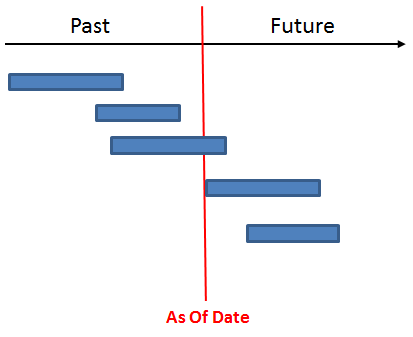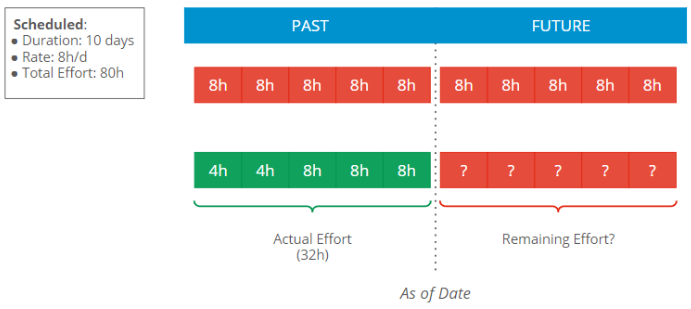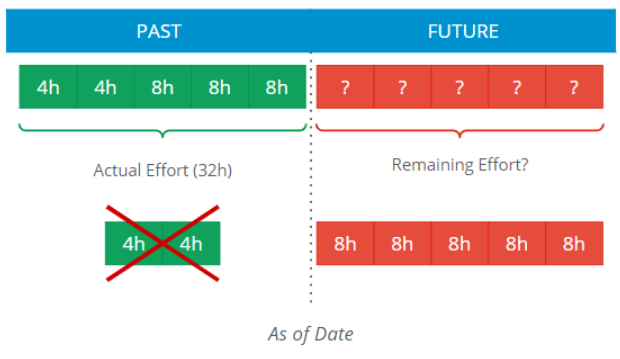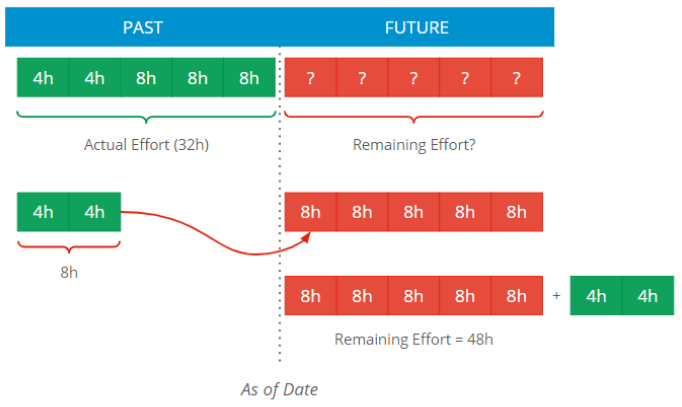To manage a schedule, the project manager must know how the work is progressing compared to the master schedule, and, if necessary, make the changes required to keep the project on time.
Tracking the schedule performance involves measuring the work performed against the work expected to be performed, and with a given expenditure of resources. Periodic reporting on the progress of the project provides the project management team with information on how the project is performing against expectations, allowing them to make decisions and corrections as required. Accurate measurement of schedule performance requires planning during the early stages of the project to determine the unit of measure and the process for tracking progress.
To determine the percentage of a project that has been completed, the project manager must determine what to measure: Time, Effort, Costs, etc.
Tracking the Schedule
This constitutes the roadmap for the project. Tracking can be done by conducting periodic project status meetings, evaluating the results of reviews, determining whether milestones were reached by their scheduled dates, comparing actual starts to planned start dates, etc.
Tracking the Effort
Actual efforts are tracked in order to show the actual effort incurred during the completed portions of tasks and the remaining effort planned for the remaining portions of tasks.
Tracking the Earned Value
Earned value is the approved budget for the work actually completed by a specified date. It is also referred to as the BCWP (Budgeted Cost of Work Performed).
You should keep in mind that the most important thing is not the type of tracking you are going to use, but rather the accuracy of the values entered.
Whatever method is used to prepare and display the Gantt chart, progress assessment is simply a matter of checking that all the tasks (or portions of tasks) lying to the left of the date cursor have been completed. Doing so highlights all of the tasks that are running late. Gantt bars can be used to plot progress. For this purpose, a date cursor can be added, which is a vertical line placed on the Gantt chart at the review date.
In Sciforma, the review date is called the As Of Date.
You may choose not to use “today” as the base date for the calculation of the plan. It may, for example, be more convenient to base the calculations on next Monday or the day after tomorrow. It would be unusual if this base date were more than a few days in the future because too many things could change between now and then.
The As Of Date is not the same as the Completed date which is the date up to which tasks have been completed.
When you're managing a project, comparing work effort expended with work effort planned can be helpful in determining when people:
are incorrectly expanding or reducing the scope of a task,
are more qualified or less qualified than you anticipated,
are encountering unexpected difficulties performing the work, or
are in danger of using up allocated work effort before the project ends.
Monitoring work effort requires that you collect the actual effort spent on each task.
You begin by analyzing the work effort expended. Evaluate your project’s work-effort expenditures by comparing the actual expenditures with those in your plan.
You obtain or derive the following information:
The number of hours each team member spent on each task
The number of hours left for each team member to spend on each task
The difference between the number of hours specified in the plan and the number of hours each team member actually spent on each task
To collect work-effort data, have team members give you data or fill out timesheets.
Take the following steps to increase the accuracy of the work-effort expenditure data you collect:
Explain to people that you’re using their labor-effort expenditures to help you determine when changes need to be made to aspects of the plan.
Encourage people to record the actual hours they work instead of making their total hours equal forty hours per week.
Include categories for time on non-project tasks, such as “unallocated”, “administrative overhead”, “training”, and so on.
Encourage people to fill out their own timesheets.
Collect data weekly, if possible.
Don’t ask people to submit their timesheets before the period is over.
Sciforma uses the following vocabulary when talking about Schedule Tracking:
Fields | Definition |
|---|---|
Actual Effort | The Actual Effort is the number of hours actually expended for the completed portion of the task. |
Remaining Effort | The Remaining Effort is the number of hours to be completed on the task. |
Total Effort | Total Effort = Actual Effort + Remaining Effort |
Tracking options regarding the algorithm will be set by the Administrator in the Designer Assignments Options view. Project Managers will not be able to modify them.
Thirty-two hours of Actual Effort has been entered, whereas forty hours had been planned for the first week. We have a difference of eight hours.
How could the Project Manager analyze this?
Perhaps the resource has worked more efficiently than expected. The 8-hour difference does not have to be rescheduled, meaning that the Remaining Effort stays the same and the Total Effort is modified.
The resource may have external constraints, so the 8-hour difference must be rescheduled for a later time, meaning that the Total Effort stays the same and the Remaining Effort is modified.
It is often more important for the project manager to know what the Remaining Effort is rather than what the Actual Effort is.
OPTION #1 – MAINTAIN THE REMAINING EFFORT
The Remaining Effort is fixed and the Total Effort has to be recalculated following the equation: Total Effort = Actual Effort + Remaining Effort
No action has to be done by the Project Manager.
It means that the Total Effort will be recalculated and the Remaining Effort will remain the same, regardless of the assignment’s Distribution Type.
In our example, the new Total Effort will be of 72h (32h of Actual Effort + 40h of Remaining Effort).
In order to use this algorithm, Administrators must not activate the "Adjust remaining units to maintain total usage" option in the Assignment Options view of the Designer.
If a Team Member has revised the Task Remaining Effort in his/her Timesheet, the assignment Rate or the task Duration will be updated depending on the Distribution Type.
OPTION #2 – MAINTAIN TOTAL EFFORT
This option means that the Remaining Effort has to be recalculated.
The Total Effort is maintained and the Remaining Effort has to be recalculated.
Adjusting the Remaining Effort is no different than planning. It uses the same algorithm.
The way the Remaining Effort will be scheduled will depend on the Assignment’s Distribution type.
If the Distribution type is Fixed Effort or Fixed Effort-Rate, then the Rate will be recalculated and the Duration remains the same.
If the Distribution type is Fixed Duration or Fixed Duration-Effort, then the Rate will be recalculated and the Duration remains the same.
If the Distribution type is Fixed Rate or Fixed Rate-Effort, then the Duration will be recalculated and the Rate remains the same.
In order to use this algorithm, Administrators must activate the "Adjust remaining units to maintain total usage" option in the Assignment Options view of the Designer.




